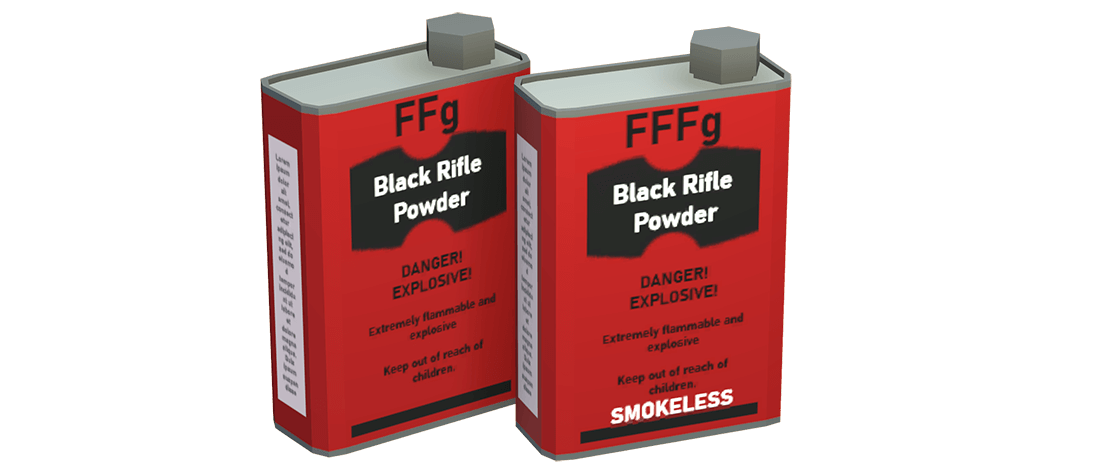Muzzleloading Firearms Definition
What is the difference between a muzzleloader and a regular firearm?

Primitive hunting arms include bows and muzzleloading firearms. Their limited range calls for extra skill and stealth by the hunter in pursuing game. Much practice is required to become accurate with these arms. Even if you don't own primitive hunting arms, some knowledge of their safe use and storage is a bonus to any hunter.
History of Muzzleloading Firearms
The invention of the matchlock firearm dates back to the early 1400s. The matchlock was a smoothbore firearm with a wick placed directly over an open pan. Powder ignition was very slow. The matchlock was probably the first shoulder mounted firearm that Europeans brought to North America.
By the 1600s, the wheellock muzzleloader was invented. The wheellock was a complicated and expensive muzzleloader. It offered relatively quick ignition. Because of its many moving parts and cost, the wheellock was not popular.
The flintlock muzzleloader, which appeared in the late 1600s, offered fast ignition. They were comparatively inexpensive and lightweight. The flintlock rifle was a basic survival tool for settlers coming to North America.
Improvements to the muzzleloading firearm were constantly being made. The percussion caplock was developed in the early 1800s. It offered a more reliable ignition, but had a tendency to malfunction in foul weather. The caplock era did not last long; breech-loading firearms replaced them.
In recent years, another modification to the caplock has become common. The nipple and cap are "in-line" with the barrel of the firearm. The striker mechanism operates similar to bolt action firearms. "In-lines" are not new, but have become popular because of modern production methods and the ease of mounting scope sights.
The use of muzzleloading firearms for target shooting and hunting has again become popular. Primitive firearm seasons for big game species are very common across North America. These seasons offer much more time afield for the avid hunter.
What kind of black powder should be used in a muzzleloader?

Remember: The finer the granulation of powder, the more pressure it creates when fired.
Types of black powder
- Fg - very coarse granules of powder used mainly in cannons or large caliber firearms.
- FFg - finer granules than the Fg, used mainly in shotguns and larger caliber rifles.
- FFFg - the most common type, used generally in .45 caliber and smaller rifles.
- FFFFg - the finest granulation. This powder is used for priming flintlock muzzleloaders. For safety reasons, never use FFFFg powder as a propellant charge.
Which of these types of black powder creates the most pressure?
FFFFg has the finest granulation. The finer the granulation of powder, the more pressure it creates when fired.
All types of powder must be handled with extreme caution! Smokeless powder burns while black powder explodes.
Pyrodex is a safe substitute for black powder, but make sure you follow your gun manufacturer’s recommendations.
Muzzleloading Accessories

1. Powder Horn
A container for black powder, usually made of brass or an animal's horn.
2. Short Starter
A short starter is a must for safety purposes. The initial movement of the ball down the barrel is the hardest. A short starter is used to begin pushing the bullet down the barrel. A long ramrod used for this purpose might break and injure you while loading.
3. Flints
Flintlocks require pieces of flint to place in the jaws of the hammer. They are usually padded with leather or lead.
4. Powder Measure
An accessory used to measure consistent amounts of powder and to transfer the measured powder to the barrel.
5. Ramrod
A hardwood or fiberglass rod used to push components down the barrel. A ramrod can be fitted with attachments such as a worm or screw used to remove stuck cleaning patches or balls.
6. Patch Lubricant
Used primarily for lubricating patches, some modern lubricants also act as good rust inhibitors when storing your firearm.
7. Bullet
A small, lubricated patch of pure cotton or linen is used for round balls in rifled barrels. A knife is used to trim excess patch material.
Conical bullets do not require a patch and may be prelubricated. A patch may be used to carry a bullet smaller than the bore.
8. Loading Block
The loading block may be used to hold prelubricated, patched balls for quicker loading.
9. Possibles Bag
To hold all muzzleloading accessories.
10. Nipple Wrench
Small wrench used to replace a broken or damaged firing nipple. The pick is used to clean the flash hole in the nipple.
11. Percussion Caps
For caplocks, the holder aids in storing and placing caps on the nipple.